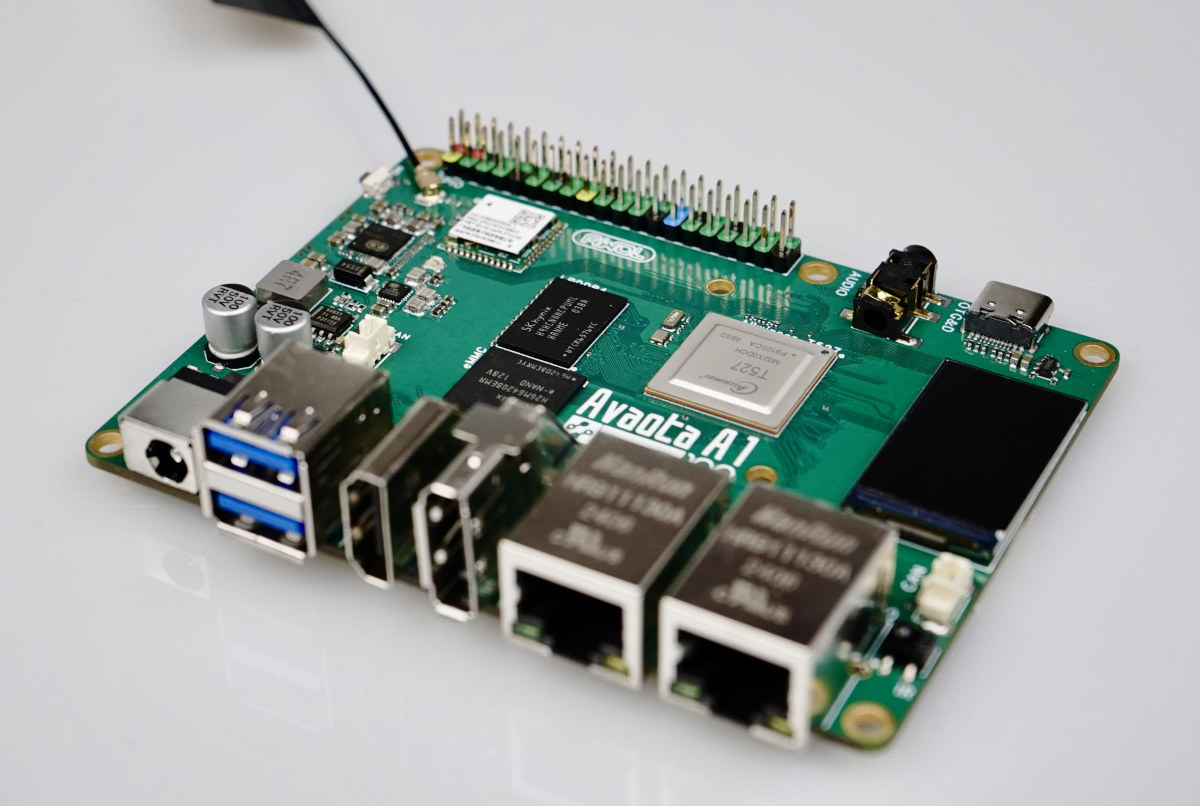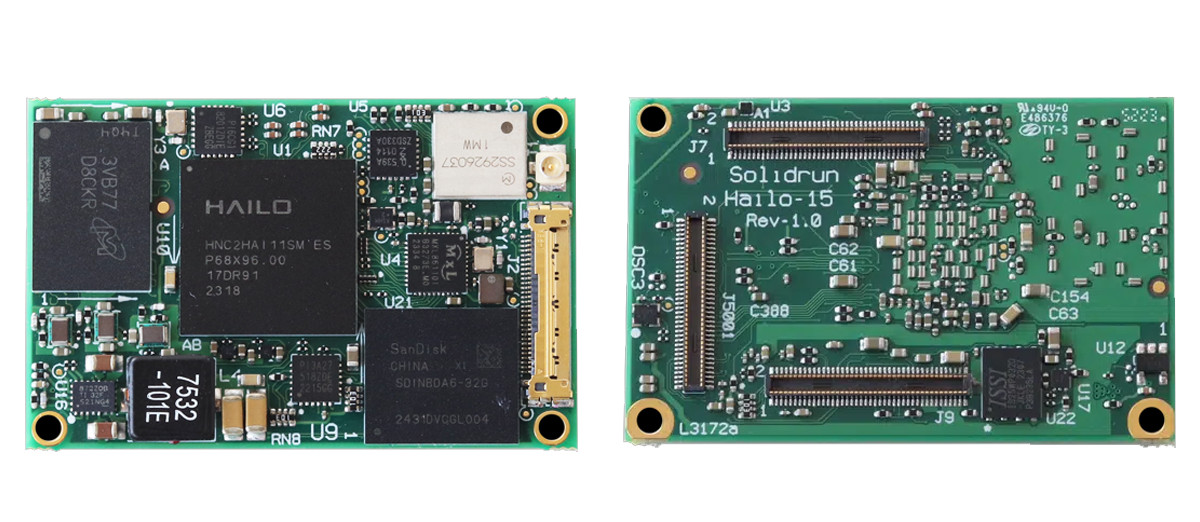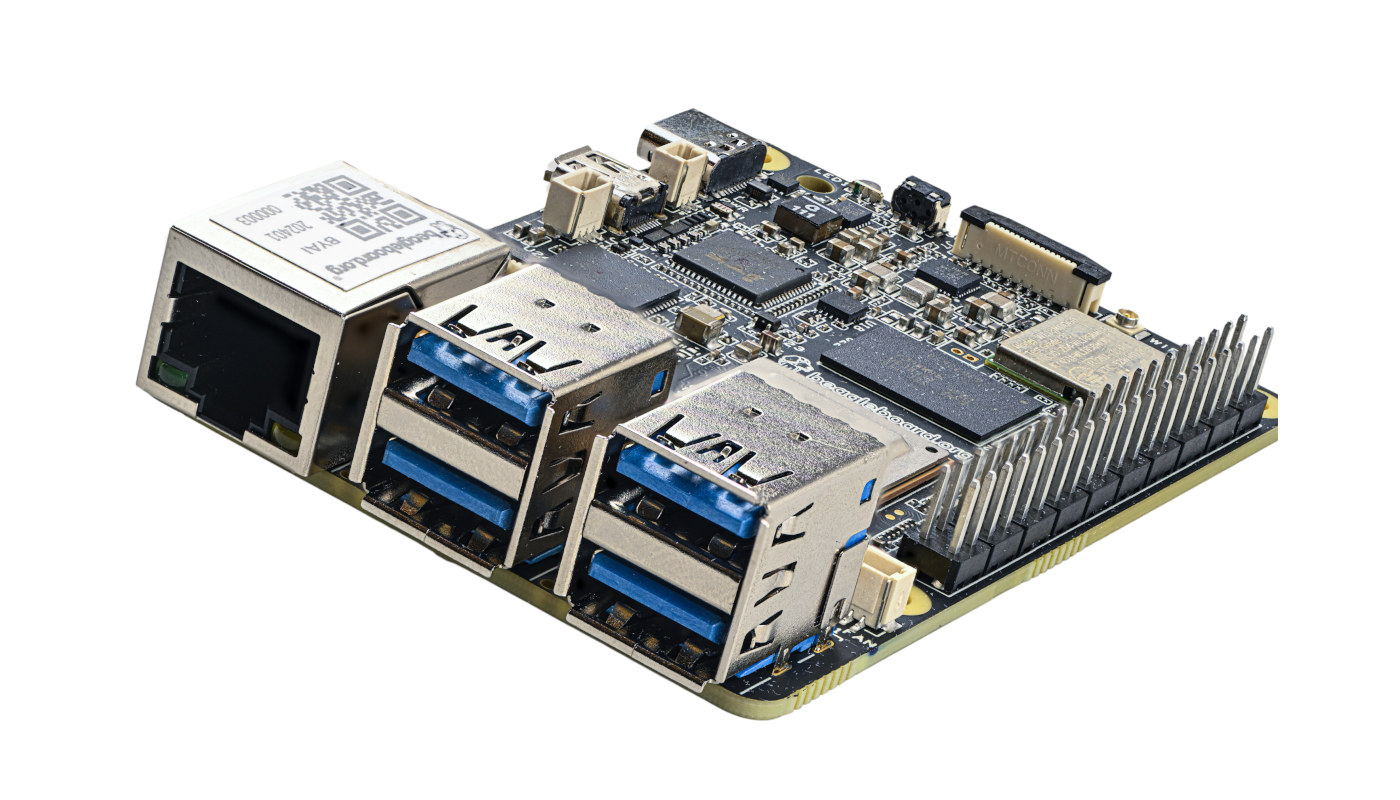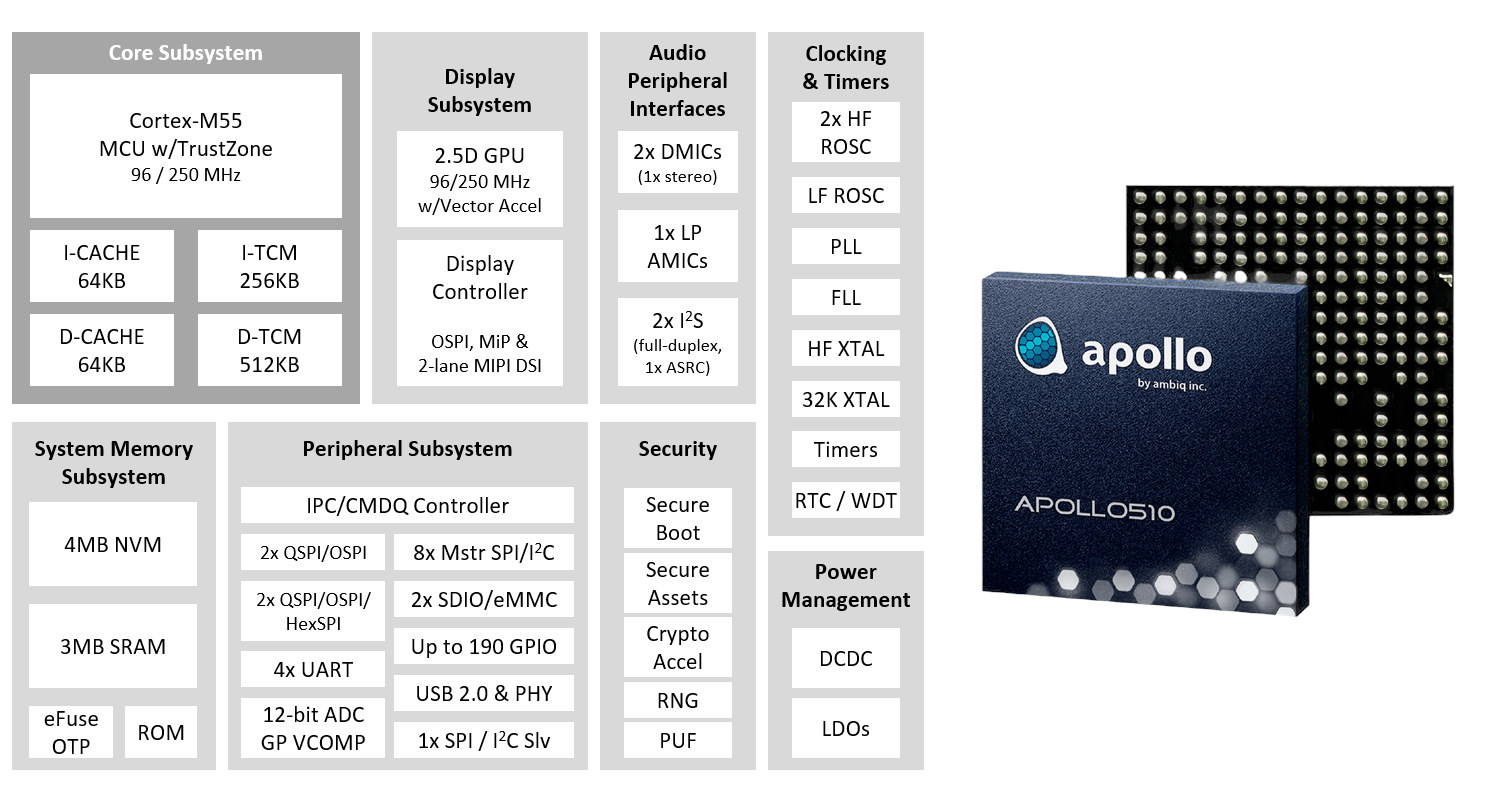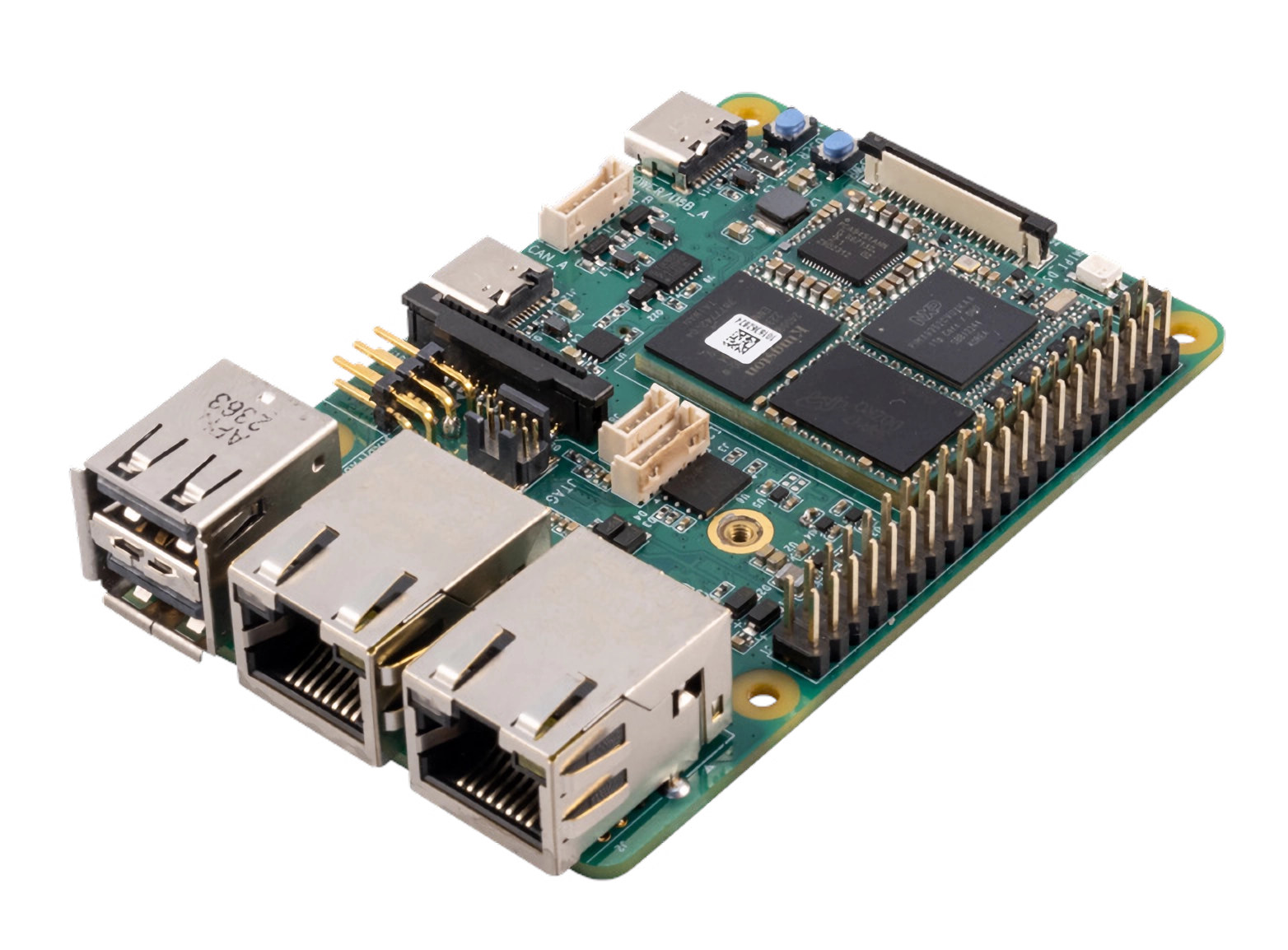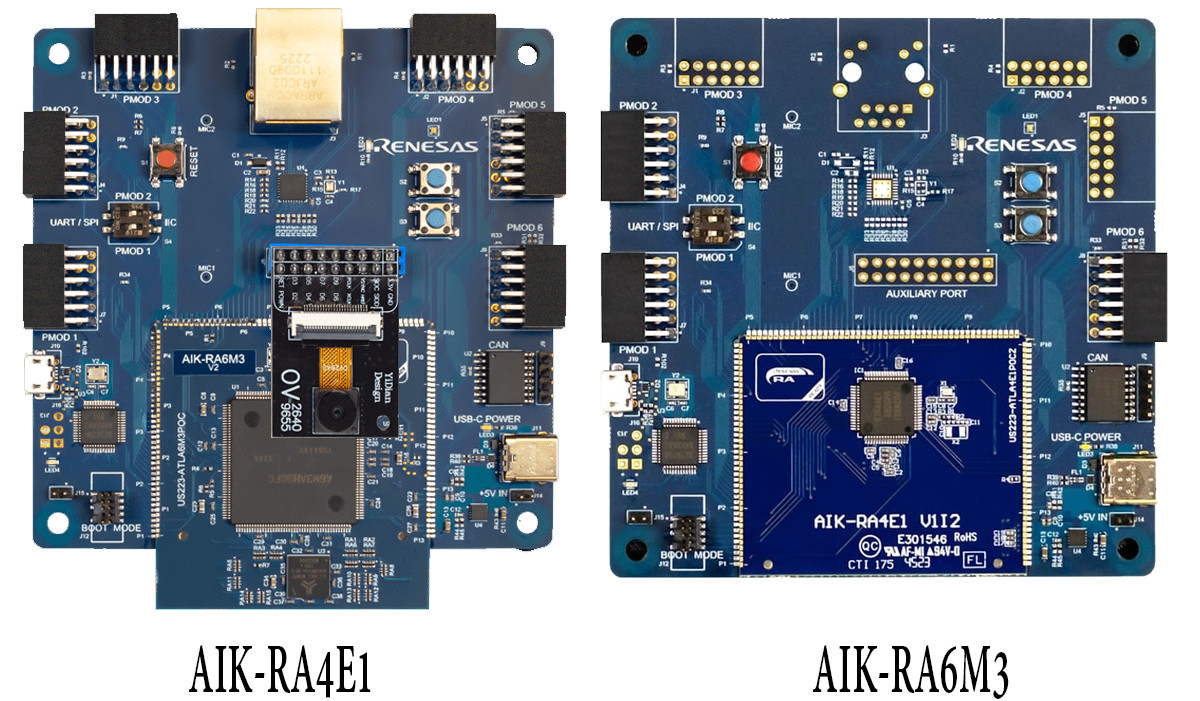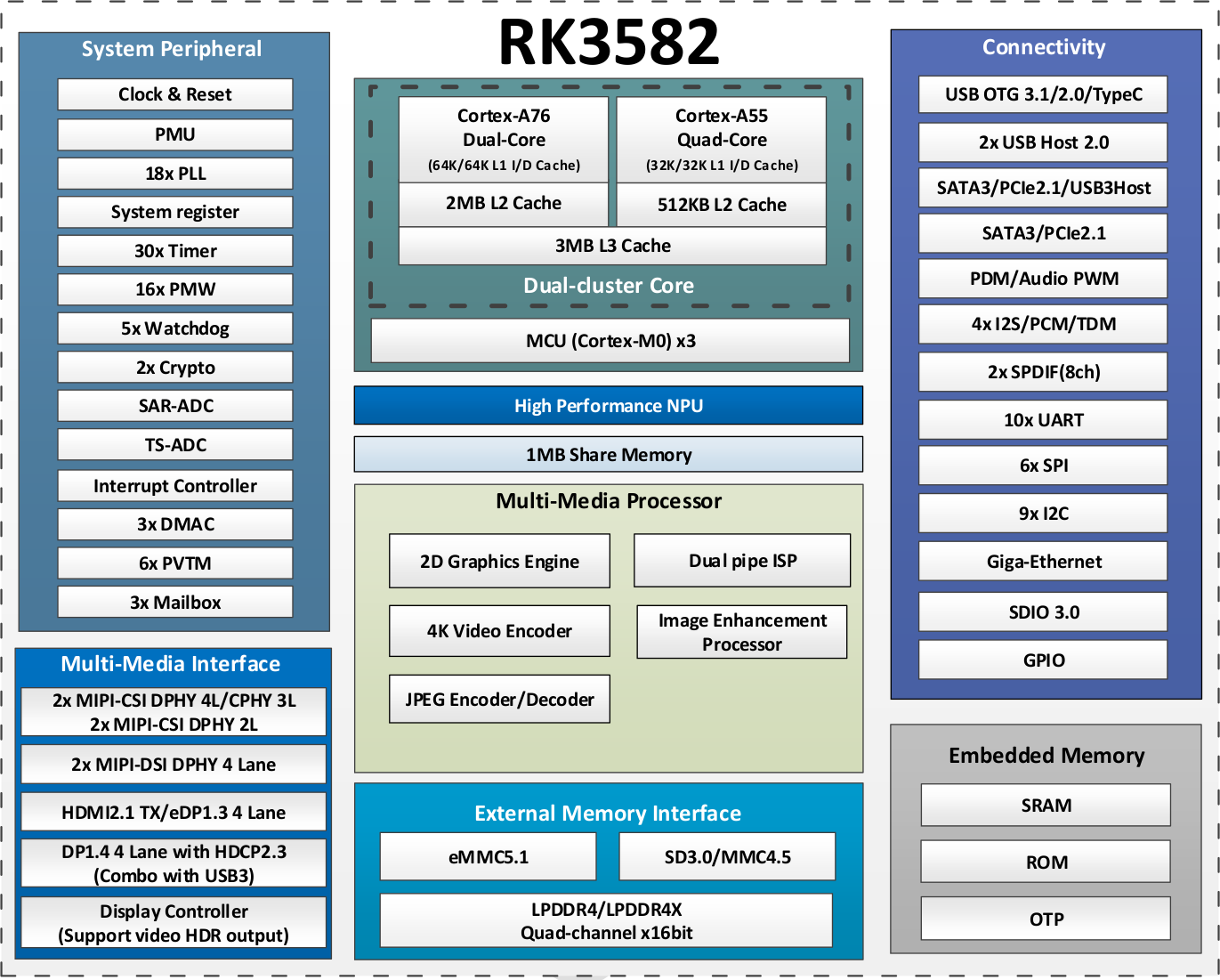We’ve recently covered MYiR Tech MYD-LT527 industrial development board based on Allwinner T527 octa-core Cortex-A55 AI SoC and noted Orange Pi is working on one that should even get mainline Linux support. The Avaoto A1 offers another Allwinner T527 hardware option with an SBC design that’s fully open-source. The board is equipped with up to 4GB RAM, 128GB eMMC flash, HDMI and DisplayPort video outputs, two gigabit Ethernet ports, a WiFi 6 and Bluetooth 5.4 module, a few USB ports, a 3.5mm audio jack and the usual 40-pin GPIO header for expansion. Avaota A1 specifications: SoC – Allwinner T527 (or Allwinner A527 with Avaota A1C board, not sure what the differences are between the two) CPU Octa-core Arm Cortex-A55 processor with four cores @ 1.80 GHz and four cores @ 1.42GHz XuanTie E906 RISC-V core up to 200 MHz GPU – Arm Mali-G57 MC1 GPU with support for OpenGL ES […]
SolidRun launches Hailo-15 SOM with up to 20 TOPS AI vision processor
In March last year, we saw Hailo introduce their quad-core Cortex-A53-based Hailo-15 AI Vision processor. The processor features an advanced computer vision engine and can deliver up to 20 TOPS of processing power. However, after that initial release, we didn’t find it in any commercial products with the SoC. But in a recent development, SolidRun has released a SOM that not only features the Hailo-15 SoC but also integrates up to 8GB LPDDR4 RAM and 256GB eMMC storage along with dual camera support with H.265/4 Video Encoder. This is not the first SOM that SolidRun has released. Previously, we wrote about the SolidRun RZ/G2LC SOM, and before that, SolidRun launched the LX2-Lite SOM along with the ClearFog LX2-Lite dev board. Last month, they released their first COM Express module based on the Ryzen V3000 Series APU. Specification of SolidRun’s Hailo-15 SOM: SoC – Hailo-15 with 4 x Cortex A53 @ 1.3GHz; […]
Orange Pi Developer Conference 2024, upcoming Orange Pi SBCs and products
Orange Pi held a Developer Conference on March 24, 2024, in Shenzhen, China, and while I could not make it, the company provided photos of the event where people discussed upcoming boards and products, as well as software support for the Orange Pi SBCs. So I’ll go through some of the photos to check out what was discussed and what’s coming. While Orange Pi is mostly known for its development boards the company has also been working on consumer products including the Orange Health Watch D Pro and the OrangePi Neo handheld console. The Orange Pi Watch D Pro is said to implement non-invasive blood glucose monitoring, blood pressure monitoring, one-click “micro-physical examination” and other functions to to help users monitor their health monitoring. The Watch D Pro uses a technique that emits a green light to measure glucose levels in the blood, and we’re told it’s accurate enough to […]
BeagleY-AI SBC features TI AM67A vision processor with 4 TOPS AI accelerators
The BeagleBoard.org Foundation’s BeagleY-AI is an open-source hardware, credit card-sized SBC powered by a Texas Instruments AM67A quad-core Cortex-A53 vision processor with various programmable blocks capable of delivering up to 4 TOPS for AI algorithms. The board ships with 4GB RAM, relies on a microSD card slot for storage and OS booting, implements gigabit Ethernet, WiFi 6, and Bluetooth 5.4 connectivity, and can drive up to three displays via micro HDMI, OLDI (LVDS), and MIPI DSI interfaces. The BeagleY-AI also comes with two MIPI CSI camera interfaces, four USB 3.0 ports, a USB Type-C port, and a 40-pin GPIO header for expansion. We can also see a 16-pin PCIe FPC connector that looks somewhat similar to the 20-pin PCIe connector on the Raspberry Pi 5 but officially supports PCIe Gen3 x1. BeagleY-AI specifications: SoC – Texas Instruments AM67A (J722S) “vision processor” CPU Quad-core 64-bit Arm Cortex-A53 processor at 1.4GHz Arm […]
Ambiq Apollo510 Arm Cortex-M55 MCU delivers up to 30x better power efficiency for AI/ML workloads
Ambiq Apollo510 Arm Cortex-M55 microcontroller delivers 30 times better power efficiency than typical Cortex-M4 designs and 10 times the performance of the Apollo4 Cortex-M4 sub-threshold microcontroller for AI and ML workloads. The new MCU also comes with 4MB NVM, 3.75MB SRAM, a 2.5D GPU with vector graphics acceleration that’s 3.5 times faster than the Apollo4 Plus, and support for low-power Memory-in-Pixel (MiP) displays. Like all other Ambiq microcontrollers, the Apollo510 operates at sub-threshold voltage for ultra-low power consumption and implements security with the company’s secureSPOT platform with Arm TrustZone technology. Ambiq Apollo510 specifications: MCU Core – Arm Cortex-M55 core up to 250 MHz with Arm Helium MVE, Arm TrustZone, FPU, MPU, 64KB I-cache, 64KB D-cache, 256KB I-TCM (Tighly Coupled Memory), 256KB D-TCM, Graphics – 2.5D GPU clocked at 96 MHz or 250 MHz with vector graphics acceleration, anti-aliasing hardware acceleration, rasterizer/full alpha blending/texture mapping, texture/framebuffer compression (TSC4, 6, 6A and […]
MaaXBoard OSM93 – Business card-sized SBC features NXP i.MX 93 AI SoC, supports Raspberry Pi HATs
MaaXBoard OSM93 is a single board computer (SBC) based on a Size-S OSM module powered by an NXP i.MX 93 Cortex-M55/M33 AI SoC and offered in a business card form factor with support for Raspberry Pi HAT boards through a 40-pin GPIO header and mounting holes. The board also comes with 2GB LDDR4, 16GB eMMC flash, MIPI CSI and DSI interfaces for optional camera and display modules, two gigabit Ethernet ports, optional support for WiFi 6, Bluetooth 5.3, and 802.15.4, three USB 2.0 ports, and two CAN FD interfaces with on-board transceivers. MaaXBoard OSM93 specifications: SoC – NXP i.MX93 CPU 2x Arm Cortex-A55 up to 1.7 GHz 2x Arm Cortex-M33 up to 250 MHz GPU – 2D GPU with blending/composition, resize, color space conversion NPU – 1x Arm Ethos-U65 NPU @ 1 GHz up to 0.5 TOPS Memory – 640 KB OCRAM w/ ECC Security – EdgeLock Secure Enclave System […]
Renesas AIK-RA4E1 and AIK-RA6M3 reference kits are designed for accelerated AI/ML development
Renesas AIK-RA4E1 and AIK-RA6M3 are two new development boards based on RA-series 32-bit microcontrollers. These new dev boards have multiple reconfigurable connectivity functions to accelerate AI and ML design and development time. Both boards appear similar, but the AIK-RA4E1 uses the R7FA4E110D2CFM MCU, features three Pmod ports, and has no Ethernet support. On the other hand, the AIK-RA6M3 utilizes the R7FA6M3AH3CFC MCU, has six Pmod ports, and includes Ethernet support. Both the boards support full-speed USB and CAN bus. Renesas AIK-RA4E1 and AIK-RA6M3 reference kits specifications (Consolidated): RA4E1 Microcontroller Features: Model: R7FA4E110D2CFM Package: 64-pin LQFP Core: 100 MHz Arm Cortex-M33 SRAM: 128 KB on-chip Code Flash Memory: 512 MB on-chip Data Flash Memory: 8 KB on-chip RA6M3 Microcontroller Features: Model: R7FA6M3AH3CFC Package: 176-pin LQFP Core: 120 MHz Arm Cortex-M4 with FPU SRAM: 640 KB on-chip Code Flash Memory: 2 MB on-chip Data Flash Memory: 64 KB on-chip Connectivity: One USB […]
Rockchip RK3582 is a cost-down version of RK3588S with two Cortex-A76 cores, four Cortex-A55 cores, no GPU
Rockchip RK3582 hexa-core SoC is pin-to-pin compatible with the popular Rockchip RK3588S octa-core Cortex-A76/A55 SoC, but only features two Cortex-A76 cores, a 5 TOPS NPU (instead of 6 TOPS) and does not come with a 3D GPU. I was first made aware of the Rockchip RK3582 in October 2023 when I was sent a photo of a board allegedly for a TV box, but while the RK3582 still features a 4K video decoder, the lack of a 3D GPU could make it problematic with 3D accelerated user interface. We now have more details with Radxa having released the datasheet and a few more interesting details. Rockchip RK3582 specifications: Hexa-core CPU – 2x Cortex-A76 and 4x Cortex-A55 cores in dynamIQ configuration (frequencies are still shown as TBD in the datasheet) GPU No 3D GPU 2D graphics engine up to 8192×8192 source, 4096×4096 destination AI Accelerator – 5 TOPS NPU 3.0 (Neural […]


